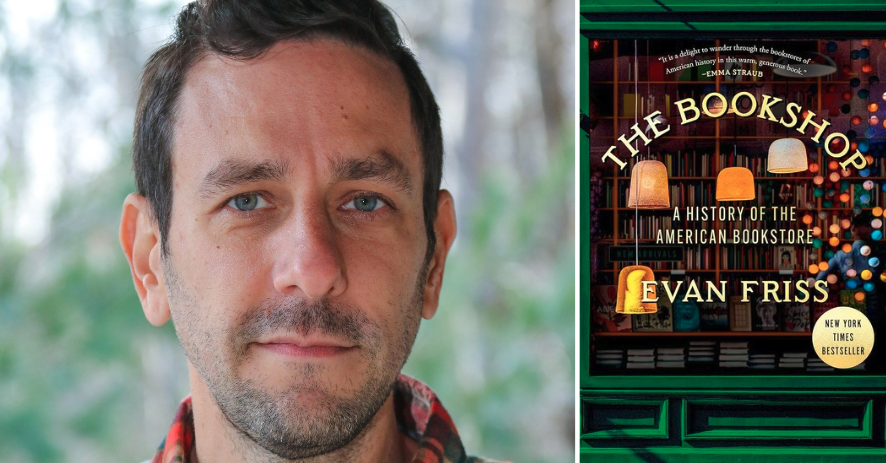
Two years ago I published an essay here called “How the West Was Lost.” In it, a handful of gifted writers—Ivan Doig, Joan Didion, Edward Abbey, and Jim Harrison—offered their takes on how Americans have despoiled their frontier. Harrison and Abbey decried environmental degradation, especially the damming of rivers so cities could bloom in deserts, where no city belongs. Didion punctured the myth of pioneer grit by pointing out that federal tax dollars have underwritten most signature western ventures, including the railroads, the aerospace industry, and big agriculture. And Doig, a product of the “lariat proletariat,” lamented the sacrifice of old ways and individual freedoms on the altar of spurious progress.


 Now I would like to nominate Deanne Stillman for admission to this distinguished group. Over the past three decades, her nonfiction and journalism have probed the violence Americans have done to the people, wild animals, and lands of the West. Her books include a devastating account of a double murder, Twentynine Palms: A True Story of Murder, Marines, and the Mojave (2001); Mustang: The Saga of the Wild Horse in the American West (2008); and the story of a hermit turned cop-killer, Desert Reckoning: A Town Sheriff, a Mojave Hermit, and the Biggest Manhunt in Modern California History (2012). Stillman has just published Blood Brothers: The Story of the Strange Friendship Between Sitting Bull and Buffalo Bill. Through the unlikely reconciliation of two adversaries from the Indian Wars, the book explores “the fault line that runs through the national story”—the subjugation and repeated betrayals of Native Americans. Like all of Stillman’s work, the new book is deeply researched, a work of passion and rich insight. She spoke with me by telephone from her home in Los Angeles.
Now I would like to nominate Deanne Stillman for admission to this distinguished group. Over the past three decades, her nonfiction and journalism have probed the violence Americans have done to the people, wild animals, and lands of the West. Her books include a devastating account of a double murder, Twentynine Palms: A True Story of Murder, Marines, and the Mojave (2001); Mustang: The Saga of the Wild Horse in the American West (2008); and the story of a hermit turned cop-killer, Desert Reckoning: A Town Sheriff, a Mojave Hermit, and the Biggest Manhunt in Modern California History (2012). Stillman has just published Blood Brothers: The Story of the Strange Friendship Between Sitting Bull and Buffalo Bill. Through the unlikely reconciliation of two adversaries from the Indian Wars, the book explores “the fault line that runs through the national story”—the subjugation and repeated betrayals of Native Americans. Like all of Stillman’s work, the new book is deeply researched, a work of passion and rich insight. She spoke with me by telephone from her home in Los Angeles.
The Millions: Let’s start with a stupid question. Where did you grow up?
Deanne Stillman: I grew up in Cleveland. I’d been writing since I was a little girl, and I just knew I had to be in New York to start pursuing the creative life and I moved there in the ’70s. I was writing first for the underground press, and then began writing humor and satire and comedy, including working on projects for Saturday Night Live. In the early 1980s I began going back and forth between L.A. and New York because I had gotten a series of television jobs. And then I was hired for a TV series called Square Pegs. I was aboard that train for a while and didn’t like it and in fact at some point it started making me physically ill. One day my personal apple cart collapsed. Writing humor is all about reacting and pretending everything’s fine and everything’s funny, but things had really come to a complete halt in my life and nothing was basically funny anymore. Once I got in touch with that and got back to some earlier desires, my writing moved in another direction.
TM: In the introduction to Blood Brothers, you state that all of your books are about “acts of violence, the killing of people and wild animals, assaults on the land that have unfolded on a very big canvas, the American West.” Did you decide to work on this canvas after you moved west, or did you move west to be part of the canvas?
DS: All of the above. It all has to do with my upbringing and with my father teaching me to be a writer when I was a little girl. My first submissions were to Mad magazine, actually, under the name Dean Stillman because I saw that they were only publishing boys. The West was an escape for me as a little girl because there was a lot of turmoil in my household, and I was escaping into books about the West. And we grew up around horses, too. My mother was one of the first women in the country to ride professionally on the racetrack, and she taught me how to ride. That had a lot to do with fueling my wanderlust—hanging out at the racetrack and coming into contact with a lot of strange characters. And also moving from the right side of the tracks to the wrong side of the tracks after my parents got divorced, and finding out that there was a working class and that they were kind of persona non grata. When we moved from very comfortable surroundings to the wrong side of town, even some of our relatives stopped talking to us. So I found out at a very early age that America has a class system.
TM: So reading and fantasizing about the West was an escape for you even as a girl?
DS: Fantasizing and living inside books which my father read to me. That became a landscape I started living in.
TM: When did you move to L.A. full-time?
DS: The late ’80s or so. When my personal life fell apart, I began spending more and more time in the desert. I was kind of on automatic pilot with my writing because I had to continue making a living, and I had reached a dead end there. And then one day the story I wrote about in Twentynine Palms crossed my path and it took over my life and I knew that I was going to follow it wherever it went. So that’s how the next phase of my writing life began.
TM: Your earlier books, Twentynine Palms included, are deeply reported. There are also flashes of fiction writing in Desert Reckoning, where you get into the brains of people, which I loved. But Blood Brothers is closer to straight history. You traveled all over, reading in archives, visiting sites, looking at newspapers. I wonder if you could talk about the differences in researching and writing these different kinds of books—one is reportage, the other is almost straight history.
DS: Blood Brothers involved more archival research, for sure. But I do bring elements of fiction into all of my writing. I did have to recreate characters in Blood Brothers, and I did recreate scenes, such as when [Buffalo Bill] Cody and Sitting Bull meet for the first time—in Buffalo, New York, of all places. That draws from actual reporting, but I do weave in other elements, what they might have been feeling and how the conversations played out.
TM: So the researching and writing of this book were not all that different from the books that came before it?
DS: Most of Blood Brothers takes place in the 19th century, so I was obviously not able to talk to associates of the main characters, which does make things different. I rely on many historical accounts, some of which are from the white man’s point of view and some of which are from the Native American’s point of view. But there are plenty of things that weren’t written down that we don’t know about.
TM: I didn’t realize just how vast the literature is on the subjects you write about here. It seems like just about everybody has either written a memoir or been the subject of a newspaper or magazine article, or a biography. I laughed out loud that Tim McCoy, a cowboy turned movie actor, published a memoir ghost-written by his son. What rock hasn’t been turned over? With so much stuff available, I’m wondering if your challenge was finding something new to say—or did you not see it that way?
DS: That’s part of what I was dealing with. You’re right, there’s so much that’s been written about many, many characters of that era. But the image that drew me into writing this book was the dancing horse outside the cabin where Sitting Bull was murdered. I always follow my instincts when it comes to my work, and I knew that that image would take me somewhere, exactly where I didn’t know. But isn’t that the allure of writing?—finding out the answers to these questions? I didn’t find very much about that image of the horse tied up outside Sitting Bull’s cabin at the time of his assassination. That dancing horse was in effect taking bullets for Sitting Bull as he was being killed—that’s an insight that came to me from Chief Arvol Looking Horse, who I called to ask about the dancing horse and what it meant. So I couldn’t find out much about that horse or the image because there wasn’t much on the record. That kind of confirmed my instinct that the image could take me through the writing of this book.
TM: So that image propelled you to write the book?
DS: Totally. It totally propelled me. It haunted me for years.
TM: One of my favorite things in the book was that Buffalo Bill got sick of the “sham-hero worship,” as he puts it. Then he sets out to make a movie that captures the real spirit of the West, including the Seventh Cavalry’s massacre of Native Americans at Wounded Knee. But the movie turned out to be a failure because it was too real. People couldn’t handle it—even though he left out the fact that women and children were among those massacred. I thought that was a powerful irony.
DS: I’m glad you brought that up. Here was Cody near the end of his life telling people he was sick of this whole thing, referring to the fact that he was trapped in this persona of Buffalo Bill. I think it’s kind of a universal situation—that sooner or later we often find ourselves accepted for being one thing, but in our hearts we’re something else. Here was Cody who’d become this mythological character adored around the world by kings and wastrels. But as he began to feel remorse for his role in the closing of the West, he says many times to reporters that we haven’t done right by the Indians. Even when he was talking about Sitting Bull to reporters, he would make a point of talking about how he was the Napoleon of his people. After the Wounded Knee massacre, Cody wanted to set the record straight by making this documentary, using actual survivors and members of the cavalry. It was so real that some of the Native American re-enactors in the documentary thought that actual bullets were going to start flying.
TM: But the movie failed, as I say, because people didn’t want to hear it.
DS: We’re such an Action Jackson country. People just wanted to see a shoot-’em-up, they didn’t want to take a look at the victims. But also we Americans have a problem looking at what really happened, period. I think Cody making that film was a metaphor for the fact that we haven’t reconciled our original sin, which is the betrayal of Native Americans.
TM: This leads to another thing I wanted to ask you about. There’s a subtext in the book about celebrity in America. Look at Sitting Bull—he’s involved in the battle of Little Bighorn, he has to flee to Canada, he comes back and joins the Wild West show. He goes from fugitive to star.
DS: [Laughs.] That’s true!
TM: He and Buffalo Bill were superstars. When all else fails in America, you can always become a celebrity. These guys weren’t the first American celebrities, but I think they’re a template for what’s happening to this day in this country.
DS: I completely agree. They were hardly the first celebrities, but they were arguably two of the most famous men in American history. Without the Wild West show, our national story may well not be what it is.
TM: To go back to your book’s introduction. You mention that you’ve witnessed several recent moments of atonement and forgiveness between Native Americans and descendants of the soldiers who fought against their ancestors. These are contemporary events—the renaming of sacred lands, the fight against the pipeline—and you wrote something that I like: “Perhaps the brief time that Buffalo Bill and Sitting Bull were together can serve as a foundation upon which this rift can be repaired.” That’s a wonderful thought. I like to think you’re right, but I wonder if that’s hoping for too much, given our history.
DS: That’s a good question. We have choice here: we can hope for too much or scale it back. What’s going on now in terms of Trump’s policies regarding the environment, the rollback of wildlife protections, the assault on the wilderness, the call to euthanize all of America’s wild horses, this nonstop assault on what’s wild—this, to me, is the end game of the Indian Wars.
TM: So do you think there’s a chance for this rift to be repaired and for this country to become healthy?
DS: Over time, yes, there is a chance. You look at Standing Rock last December—descendants of soldiers who fought at Little Bighorn apologizing to Lakota elders about their role in the decimation of Native Americans, and the elders giving their acceptance speech. That was a very powerful event, in my opinion. It was covered, but it was overshadowed by the politics of the pipeline. Behind all of that, there was this spiritual shift involving this apology. It’s been happening for the past two years in other ways across the Great Plains and the West. Native Americans also apologized for wiping out Custer. The ramifications of that down the line are beyond words. It’s all to the good.








